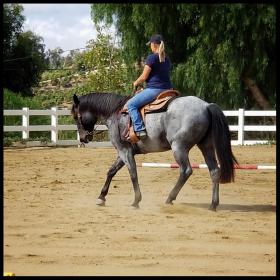I have had my 12 yo, ex ranch gelding a year, but just learned this past week that he doesn’t want to go out on trail alone. He is fine going out with other horses.
Alone on trail, he will go maybe 200 yards then stop. Pony kicks will get me a few more steps. Adding spurs will gain me a few more. Insisting starts to result in rapid reverse. He responds best to the crop – sometimes just me holding it – but then he starts to refuse even with a crop and spanking more results in a faster backup. I can get off and lead him forward. He is not afraid.
Since the trails are narrow, and I don’t like backing into who knows what, I frequently return to a wider area near trail head and disengage and do figure 8’s, and school until he goes forward willingly – but I don’t go all the way back to the exact site of first refusal, mainly because it seems “testing it out” might result in another hour long session of refusal/backup and spur/crops, and I feel I should end on a good note.
Except we aren’t getting better!
I recently moved to this barn and a trainer will help me this week, but I was struck by a comment @Heinz 57 mentioned a trained horse she took back after it became sulky and sour with it’s beginner rider. Can this be true?
Can you actually create a sour attitude in your horse just by being a beginner? I thought being lax, not setting boundries, not riding hard enough, etc might create a pushy in-your-space type horse, but not a bad attitude.
Although I have had horses for 25 years I am 63 and my riding skills might be more beginner-ish than not, since I am a trail rider and not in the arena much. He also has just come off 3 months of tack walk due to poor shoeing, so he has had it a bit easier until this past month…
Just hoping this is more solvable than not as I ride alone most of the time…





